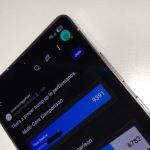Melina Mara/The Washington Post via Getty Images
- Door-to-door canvassing is one of the best ways for political campaigns to connect with voters. But, due to COVID-19, most Democratic candidates eliminated in-person voter outreach.
- Digital organizing emerged as a powerful way for Democrats to reach voters, using social media, SMS texts, calls, emails, and online advertisements.
- Even after the pandemic, digital organizing will remain pivotal to political success.
- Amanda Silberling is a Philadelphia-based writer and political organizer.
- This is an opinion article. The thoughts expressed are those of the author.
- Visit Business Insider’s homepage for more stories.
During a typical election year, you’d be hard-pressed to go anywhere without running into a canvasser, out trying to win over people to their candidate. Maybe it’s a guest at your church service, union meeting, or community group. Maybe you take a brochure from a peppy, caffeine-fueled organizer at your local farmers’ market. But this year COVID-19 changed the game for these usually ever-present campaign volunteers.
When it became clear that COVID-19 wasn’t going anywhere, the Democratic party and its allies faced an outreach crisis. What message would it send – both to its constituents and its staffers – if it asked volunteers to campaign door-to-door during a global pandemic? How could the party defeat an incumbent president if they couldn’t have face-to-face conversations?
Ultimately, the decision to forgo door-to-door canvassing may have taken a toll on down-ballot Democrats. But in the long run, the Democratic party made the correct call.
Door to virtual door
This fall, I worked as a field organizer in Philadelphia for NextGen America, a progressive youth voter program. I talked to hundreds of voters weekly, answering questions about voter registration, mail-in voting, and why every vote matters. But, in those busy months leading up to Election Day, I never once spoke with a constituent in person.
Usually, door-to-door canvassing is the bread and butter of any electoral campaign. In-person conversations are the most effective way to build relationships with voters, but in the interest of public health, most Democratic and progressive campaigns eliminated door-knocking from their field programs this year.
Across the aisle, the Trump campaign was unphased and knocked over one million doors per week. Faced with the unprecedented task of winning a presidential election from our laptops, grassroots organizers embodied the motto of civil rights leader Florynce Kennedy: “Don’t agonize, organize.”
With President Trump as a common enemy, the conditions of the pandemic encouraged allied organizations to work together more closely than ever before to make a digital-first campaign effective.
“The infrastructure of all these organizations talking with one another and sharing their findings and building on each other’s work instead of duplicating it… I hope that’s going to last forever because we all benefited from that,” said Savannah Thorpe, Hub Director of Commonwealth Communications, a leading progressive organization in Philadelphia.
There’s no doubt that refusing door-knocking was our best choice from a public health perspective. But, even when it comes to political strategy, this choice will reap lasting benefits, as it pushed campaigns to embrace digital organizing, a forward-thinking means of reaching voters online.
Digital organizing encompasses all methods of reaching voters on their phones or computers, whether that’s through texts, emails, calls, Snapchats, or advertisements. In November, for example, Representative Alexandria Ocasio-Cortez played Among Us on a Twitch stream with Canadian Parliament member Jagmeet Singh, raising over $200,000 in five hours. With so much of our lives taking place online – especially during the coronavirus pandemic – social media is key to keeping voters engaged, and the more creative, the better.
“Because we all had to get creative so fast, we all linked arms around a message and then blitzed the whole internet,” said Thorpe. “We got to try stuff this cycle that we never even would have given a whirl.”
Reaching young voters Online Can Swing Elections
It’s no coincidence that young digital natives have been on the front lines of digital organizing. As an organizer on a youth-led campaign, I know first-hand how important my generation can be in electing our leaders.
In 2016, only 46% of voters ages 18-29 turned out to vote. But, with millennial and gen-Z voters accounting for 37% of the electorate, young people have the potential to swing elections. Fortunately, we know where to capture the attention of young people: social media.
“More people than ever before were looped into apps, [social media] groups, and pages this year because they were trying to get a sense of community,” said Cara Koontz, who was the Digital Director of Commonwealth Communications.
Perhaps the Democratic candidate who most openly embraced social media was 74-year-old Sen. Ed Markey of Massachusetts, now a TikTok star with almost half a million likes.
In May, as the COVID-19 crisis raged on, Markey was losing his primary race by 16 points to Rep. Joe Kennedy III. But as co-author of the Green New Deal, Markey’s campaign captured the interest of young people, an issues-focused demographic that ardently supports action on climate change. Senator Markey ended up winning re-election by a 10 point margin, thanks to the savvy of digital organizers, a team of over 400 fellows, and an unaffiliated online group called Students for Markey. So, heading into the November general election, it was clear to the organizers working to elect Joe Biden that digital outreach would be more important than ever.
With door-knocking out of the picture, Democrats put more resources than ever into social media outreach. Through online advertisements, collaborations with social media influencers, and robust phone banking, SMS, and email campaigns, youth voter turnout increased by about 10% this year compared to 2016.
Digital Organizing Will Remain Crucial, Even After COVID
Recently, Representative Alexandria Ocasio-Cortez said that “[Democrats’] digital campaigning is very weak. This is an area where Republicans are actually quite strong.”
I asked New York City-based political strategist Kevin Wei if there’s truth behind this statement – he said, “While the Democratic party has recognized the importance of digital [organizing] post-2016, historically, I don’t think we had made the investments to keep up with the Republicans on this front.”
Wei explained that Republicans house their party’s voter data nationally, and all Republican candidates can access those files for free. On the other hand, Democratic voter files are managed by state parties, who then sell that data to campaigns. “As a result, Republicans are able to target voters and communicate more effectively than a lot of Democratic campaigns,” he said.
No matter how advanced technology gets, in-person conversations will always be our strongest political tool. But this year, by making a decision that put people’s immediate health over politics, Democrats created space for their digital programs to grow, which will continue to benefit their candidates for years to come.
With less than a month left before its Senate runoff elections, all eyes are on Georgia, where Democratic challengers Jon Ossoff and Reverend Raphael Warnock are inspiring national digital engagement. Like Senator Markey, Ossoff has become a TikTok sensation, using the platform to speak directly to young voters (he didn’t create the account until December, after the runoff race was announced). On Twitter, Ossoff is urging people to sign up via SMS for Reach, a grassroots organizing app that was created for Ocasio-Cortez’s 2018 primary. Last week, Reverend Warnock hosted a Zoom rally with President Barack Obama; in November, he went viral with over six million views on a video that compares his competitor’s smear campaign to a bag of his beagle’s poop. No matter what the digital platform, we’re already seeing how our increased attention to online outreach is changing the way that we campaign.
I’m looking forward to the day that we can knock on doors again without risking the health of our neighbors. But if the Democratic Party wants to make gains in local elections and take advantage of the momentum coming off of Biden’s win, we need to keep investing in digital organizing.
Powered by WPeMatico





